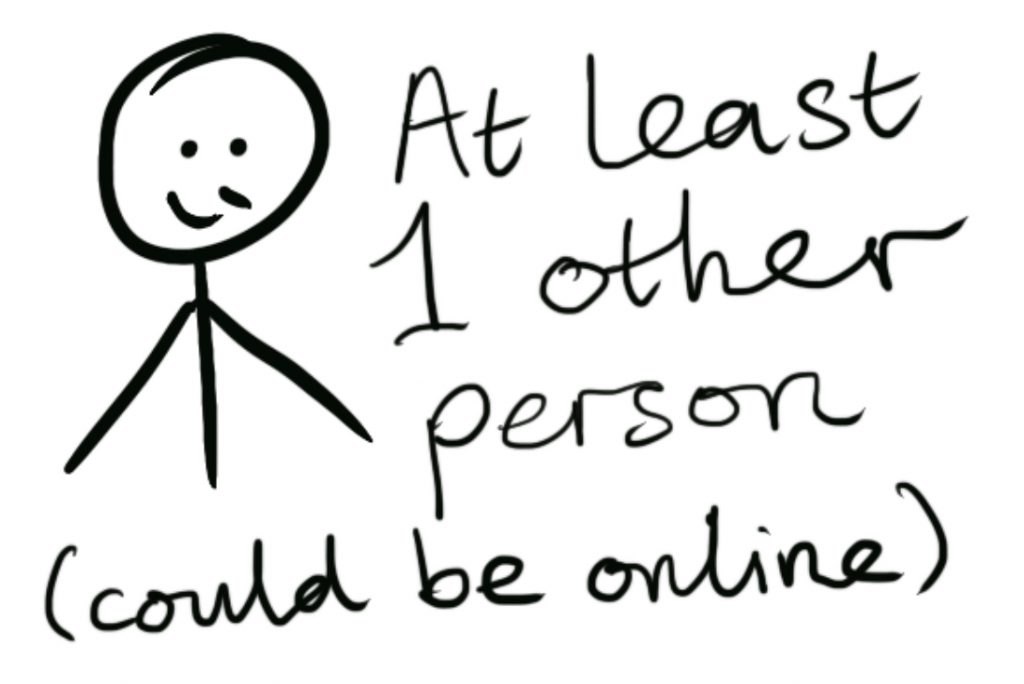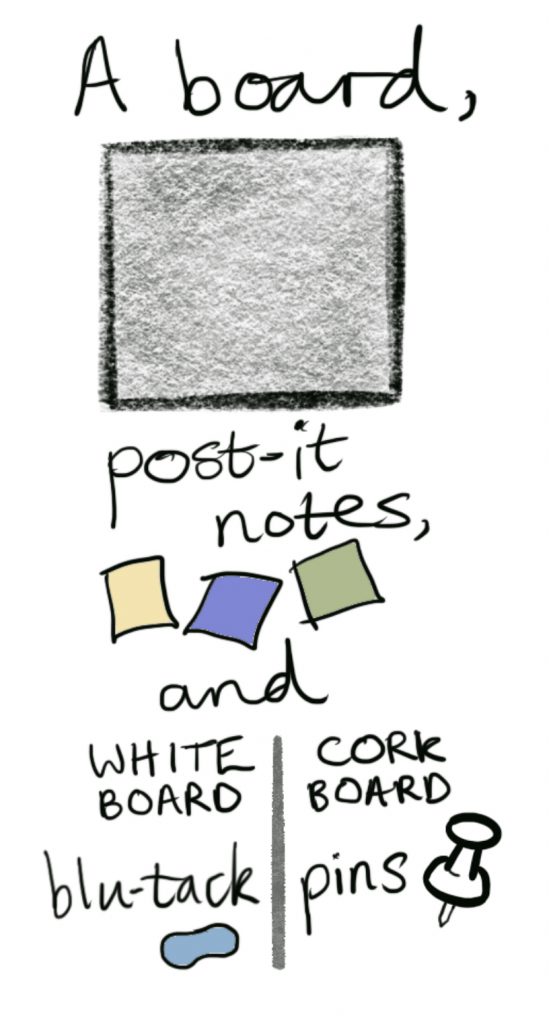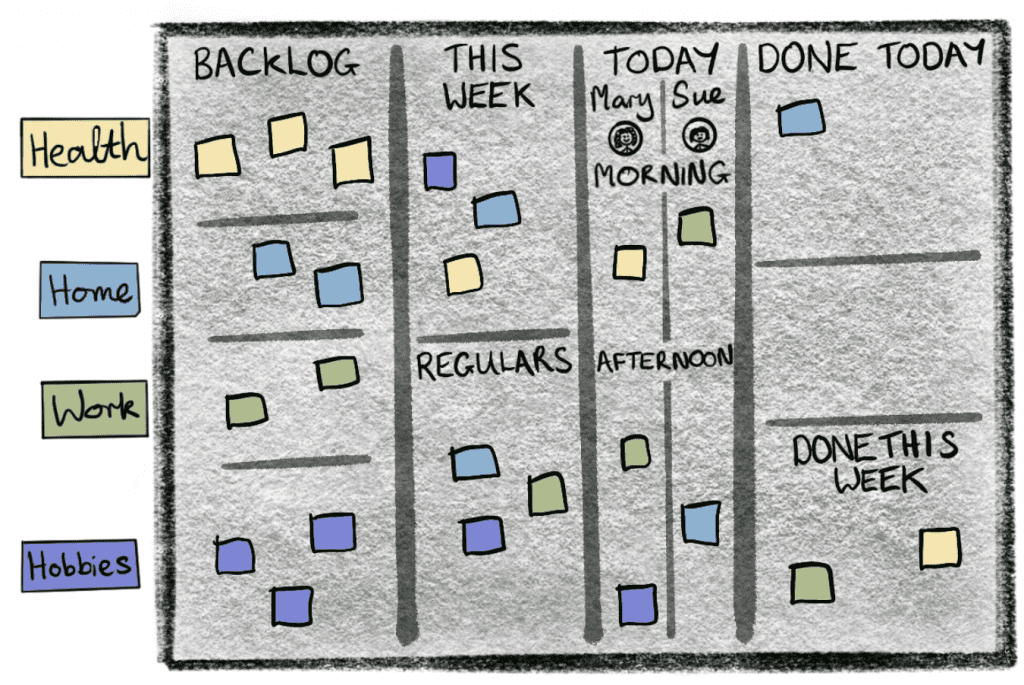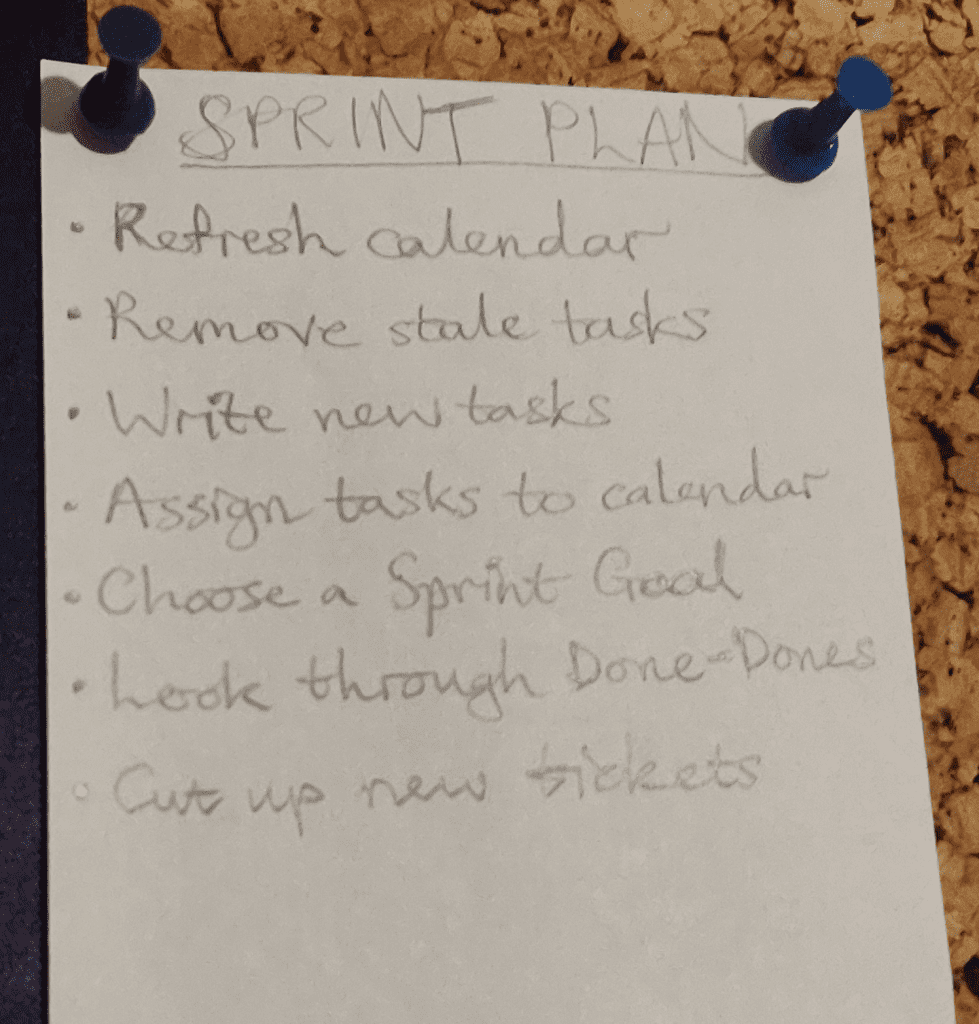
Start Home Scrum now using check-lists
How to get the most out of this blog
This blog is written with the most possible emphasis on helping you to put the ideas into specific action immediately. In this post, there are check-lists of all the actions to take to start doing Home Scrum. Your first (optional) task is to print the check-lists, as the act of physically ticking items off is a great dopamine boost.
The self-help world is in the business of peddling inspiration. To be fair, self-help advice has to make you feel as though change is possible, or you won’t try at all. However, the problem with inspiration is that it has, in the words of YouTuber CGP Grey, “a half-life of three minutes.” Inspiration cannot be trusted to actually help you change long-standing behaviours, especially if you are facing extra obstacles in the form of some kind of neurodivergence.
I often read self-help books straight through with the intention of coming back and actually implementing their suggestions, but that has never once happened; the advice is much more boring to me once I know what it is. So, if possible, don’t read too far ahead on this list or in the blog in general without putting at least some of the instructions into action first.
A useful guide to how to take action is Mel Robbins’s ‘five second rule’: once you form an intention to do something, count down from five (like a rocket counting down to launch), and before you reach zero, make sure you’ve started the task in some way—get up and move towards what you need, or open the right app on your phone. You cannot rely on inspiration to last longer than this, and the longer you wait, the more obstacles your brain will generate. This ‘five second rule’ aims to short-circuit this by not leaving enough time for your brain to get in the way.
With this in mind, start implementing the first tasks on the check-list(s) below right now!

Action check-lists
Find your Home Scrum team

- Join the blog’s sub-reddit or Slack. Don’t use Slack or Reddit? The difference is that a sub-reddit is a public forum-style website (although your username can be anonymous), while a Slack server is a closed, chat-room style messaging app which can only be joined by people who have come across the specific invite link. Once you’ve joined either one, post a quick message to introduce yourself and your hopes for using Home Scrum.
- If you don’t already know who you’d like to do Home Scrum with, make a list of potential candidates and decide who to approach.
- Get in contact with your potential Home Scrum partner(s). You could text them, call them, email them, whatever works! The earlier you invite them to consider doing it, the less it’ll seem like you’ve taken ownership of the project, and the more likely it is that they will be willing to accept part-ownership for making it work. Refer to the bullet points here if you’re not sure what to say.
- If you’re looking for someone online, then go to this blog’s sub-reddit or Slack and post for a partner there. Or, if you’re already part of a relevant online support group (e.g. a Facebook group for ADHD), then post about it there.
- Go easy on yourself if reaching out for help feels a bit (or very) uncomfortable. It makes us vulnerable and goes against our cultural training, but it will be worth it. Celebrate each small win so far and acknowledge that you’ve done something difficult.
Get your Home Scrum board set up
- [Optional] There can be a lot to do to get your Scrum board ready to go, so you can get a more tangible grip on it all by writing these next tasks onto scraps of paper and putting them on a temporary board (e.g. by assigning a part of a table to be your ‘to do’, ‘doing’ and ‘done’ spaces and moving the tasks across as you do them). Seeing your progress like this will hopefully have a galvanising effect.
- Decide with your team who wants to be involved in getting the board set up, or if they won’t mind decisions being made for them. Involve your team if you can, or at least share the tasks to make it a fair distribution of effort.

- Decide where you’ll put your board; move any furniture and take down any mirrors or pictures that are in the way.
- Gather together any items you already own from the list below which could be used for your Scrum system.
- Decide which type of board you’ll be getting: cork board or whiteboard?
- Order the board, or arrange to go to a shop to get one. (Remember you can use the links in this post as a starting point for searching for one yourself; choice fatigue is a real thing!)
- Order any screws and wall plugs you will need to attach the board to the wall.

- Arrange to borrow a drill if you don’t already have one.
- Order pins or blu-tack, depending on your type of board.
- Order post-it notes or coloured paper.
- [Optional] Order ribbons to divide your board up in a pretty way.
- [Optional] Order a compartmentalised box to store the coloured paper in.
- Clear off or create some kind of flat surface near your board that you can use to write on.
- Drill the holes, screw in the screws, and put your board on the wall!

- Decide (with your team) on the board layout you’re going to start with. Try not to overcomplicate it.
- When the decision is made, delineate your columns and add some column headings to show your board layout.
- Celebrate doing all this; you are now ready to start using Scrum!
Create your tasks

- With your team, decide on your life-categories. Assign each one a colour of post-it note. Write them onto their matching colour and display it as a reference key somewhere on your board.
- With your team, add the most immediate tasks that you are doing today or this week. Don’t worry about writing down all the tasks you can possibly think of—you will naturally think of more as you go on using the system.
- [Optional] As you write down each task that occurs to you, also add a number to represent story points. (We usually write this in a corner, with a circle around it.) To start with, you’ll have to ask your team-members what number they would rate the task, until you have a good shared understanding of how much you all roughly think things should be worth.

Daily Scrum

- Agree with your team when you’ll have your Daily Scrums. Will it be a fixed time, or just a general time, like in the evening?
- Have your first Daily Scrum! (Remember to set a timer to check you don’t go over fifteen minutes, and not to include any ‘shop talk’ about the details of the tasks.)
Sprint Retrospective
- Agree with your team how long you want each sprint to last—probably a week or two weeks. What day do you want your sprints to end? This will be the day you have your Sprint Review, Sprint Retrospective, and Sprint Plan.
- [Optional] Consider giving one person (probably whoever is roughly acting as the Scrum Master) the job of running the retro. This job could be rotated around the team.

- [Optional] Pick out a retro activity to follow from the resources within this post. If you don’t have time to do this, don’t worry—keep it super simple and quick if necessary.
- During your retro, make sure everyone has a chance to put forward their concerns somehow, and then make sure at least one of those concerns is addressed with a concrete, experimental change to your Scrum system to try and solve it.
- [Optional] Perhaps after a while, take a look at the tasks on your board and see what types of work they reflect. Is there a large imbalance between who takes on which types of work? If so, then acknowledge that in your team and consider if something needs to change.
Sprint Plan
Here are some suggested tasks to cover in a Sprint Plan:

- Check what events are coming up during the next sprint or two and add them to your board calendar (if you have one).
- Generate new tasks by brainstorming what is coming up or needs to be done in each life-category. Add story points to each ticket as you write them.
- Look through current tasks on the board and ask whether any are no longer going to happen. If not, remove them!
- Look through each task and see if any seem scary or are difficult to imagine tackling. Remove that task and replace it with just the first concrete action towards that task, or several broken-down steps towards it.
- Decide what you want to aim for as your next Sprint Goal(s).
- Decide which tasks you’re going to do this sprint and which will remain in the longer-term backlog. Base this on what you need to do for your Sprint Goal(s) and what seems genuinely realistic (if in doubt, aim for less!).
- Decide which things are the most important/which order they should be done in/prioritise a category of task using MoSCoW (Must, Should, Could, and Won’t do).
- [Optional] Decide who will do which tasks (place them in the relevant row/section on the board, if they’re separated by person).
- [Optional] Decide when you’re going to do each task by placing them on a day on your board calendar (if you have one).
Sprint Review

- Keep the (non-regular) tasks you’ve completed in a section of your board, and at the end of the sprint (or when that section is full) go through each task with your team and read out what you’ve done. It will probably be more than you remembered.
- [Optional] If you like, you can keep tasks you’re particularly proud of in some kind of ‘Jar of Awesome’ to look at every so often.
- Do whatever you can to give yourself proper credit and celebration for the things you have done, rather than worrying too much about the things you haven’t done yet.
- Come along to the sub-reddit and Slack to share your achievements with others and have an encouraging audience for your ‘Sprint Review.’







